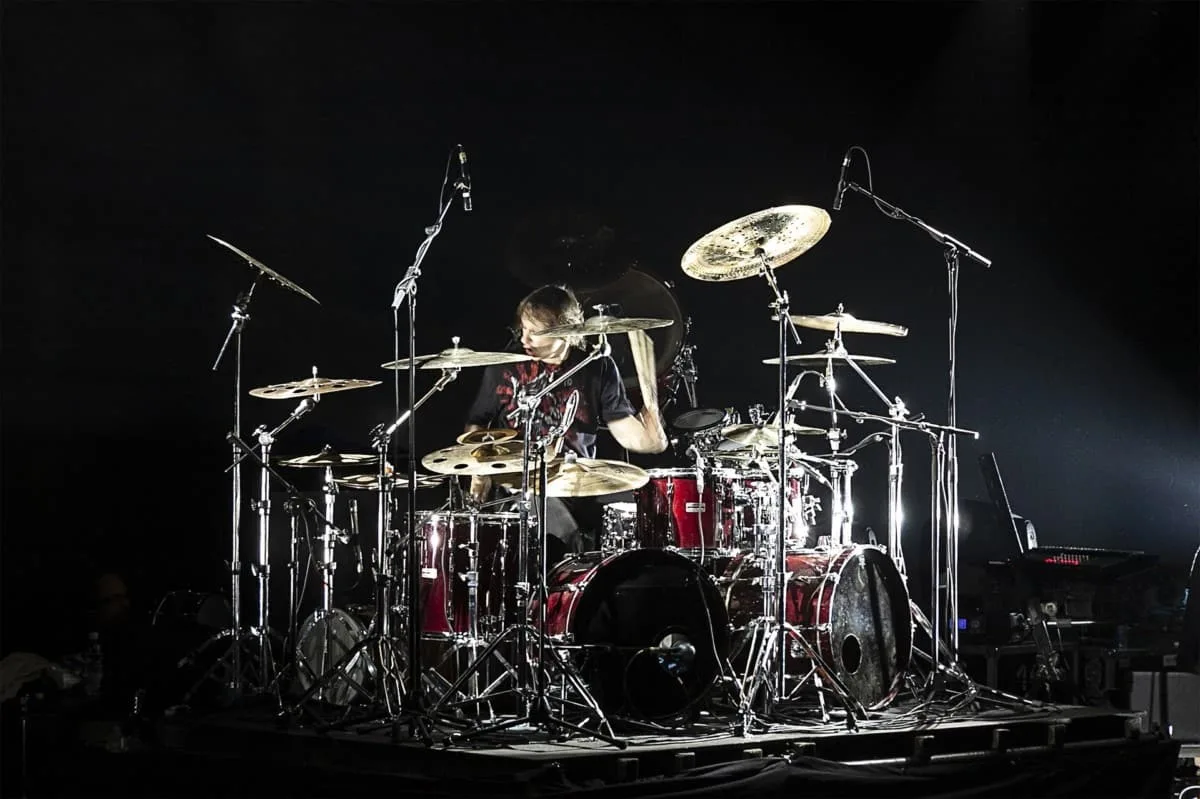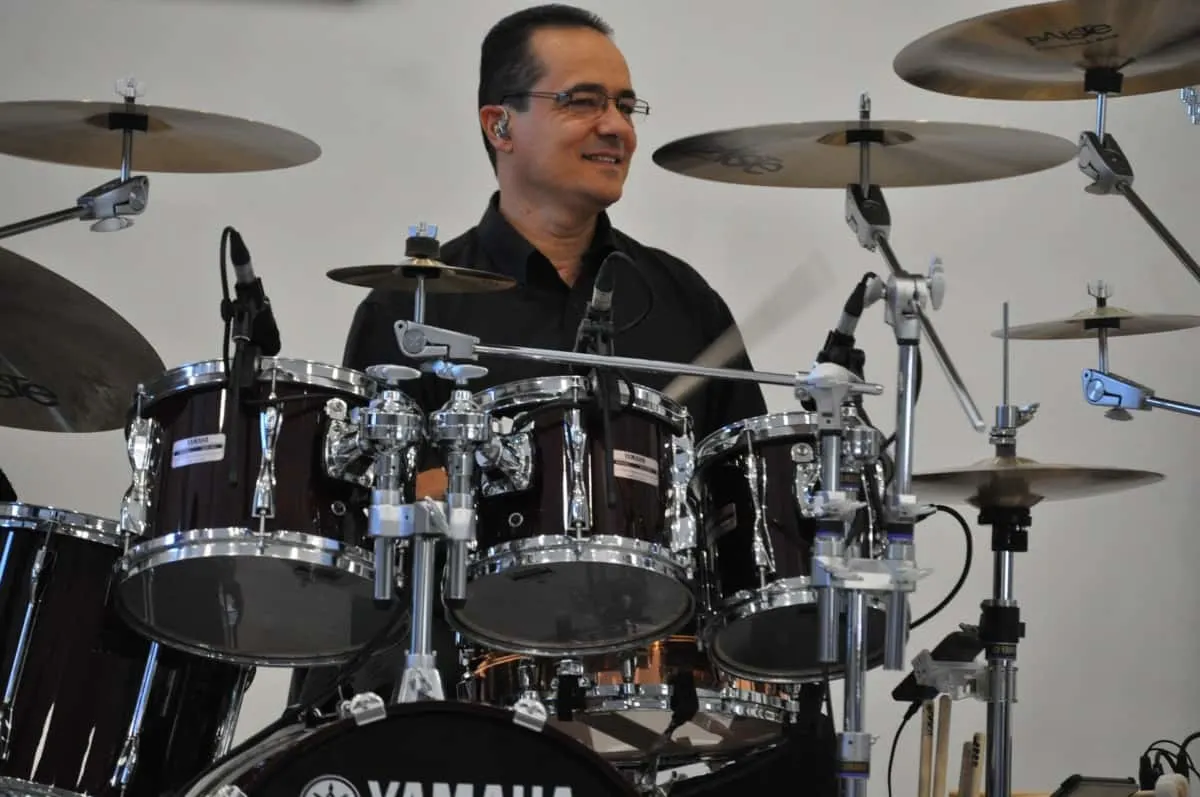When drummers first start learning the basics of playing the drums, they are likely to use whatever sticks they find. As their skills improve, the drummer may question whether a different-sized drumstick would better suit their playing style.
Drumsticks come in many different sizes and thicknesses. They are usually given a number and a letter, for example, “5A”, which describes the stick’s weight and diameter. Higher numbers indicate that the stick is lighter in weight, and the letter is commonly used to signify the thickness.
The size of a drumstick impacts everything from its suitability for certain drumming styles to the likelihood of breaking it while playing. Most drummers choose sticks based on individual preference, but their compatibility with the techniques and genres you mostly play should also be considered.
In this article, we’ll provide a definitive guide to the various drumstick sizes to ensure that you make the right choice.
The Parts of a Drumstick
Drumsticks come in varying sizes to suit specific styles of playing. To understand the impact that the drumstick size has on your playing, we need to break the drumstick down into four key areas, which are:
- Butt
- Shaft
- Taper
- Tip
The butt of the drumstick is situated at the very bottom and is generally not used to strike the drum. The shaft is the long part of the drumstick that the drummer holds, and this part comes in different lengths and thicknesses.
Then there’s the taper, the part of the drumstick that gets gradually thinner, joining the shaft to the tip. The angle of the taper can vary depending on the drumstick size and design.
Finally, the tip is located at the very top of the stick. This part of the drumstick varies in shape and is the part that most frequently comes into contact with the drum skin.
Each part of the drumstick is designed, shaped, and sized accordingly to suit the style of drumming it is made for.

The Most Common Drumstick Sizes
Drumsticks are universally categorized using a combination of one number and one letter, respectively. Although it has changed significantly, the labeling system originated over 100 years ago as a way for drumstick manufacturers to indicate the purpose of their sticks.
The letters initially indicated whether the sticks were designed for orchestral percussionists (A), drummers in bands (B), or those who were part of dance ensembles (D).
In the modern way of categorizing drumsticks, a number is placed before the letter. Lower numbers indicate the stick is thicker, and higher numbers are used for thinner sticks.
There is one exception to this rule, which I’ll explain shortly, but for the most part, the number directly correlates to the stick’s overall thickness.
- 1A – The longest drumstick
- 2B – The thickest drumstick, commonly used for heavy styles of music
- 3A – A longer and thicker version of the 5A
- 5A – The most frequently used drumstick size
- 5B – Slightly shorter but thicker than the 3A
- 7A – Thin and lightweight, great for intricate styles like jazz
- 8D – A little longer than the 7A
5A is the standard size for drumsticks, as it has a medium thickness and a weight that makes it suitable for most drumming styles. This is the stick size that most drummers start out using.
For styles like pop, indie, and rock, you can’t really go wrong with a 5A. It facilitates relatively fast drumming techniques while providing the power needed for these genres.
Thinner sticks are usually preferred by drummers who play with fast, technical styles. Jazz drummers often opt for 7A sticks, as they are very lightweight and, therefore, can be used for 16th notes, drags, and other fast-paced jazz techniques.
If you’re a metal or heavy rock drummer, chances are you’ll want to maximize the volume of your drum kit. For these styles, thicker sticks are often preferred for their power.
The 2B is the thickest variety of drumsticks and is noticeably heavier than most other types. This naturally makes them louder when they strike the drumhead, although it’s more difficult to use them for fast, intricate playing.
Finally, sticks like the 1A, 3A, 5B, and 8D are all less commonly used but can be useful for specific purposes. The 1A, for example, is the longest variety, which may be preferable for drummers who use a lot of cymbals and drums in their kit.
Tip Shapes & Sizes
The shaft is the part of the drumstick that largely determines its weight and length, but the tip is the part that comes into contact with the skin of a drum most frequently.
Choosing sticks that have a tip that is suitably shaped and sized for your style is essential if you want to play to your strengths. There are several types of drumstick tips, including:
- Oval tip
- Barrel tip
- Round tip
- Tear-drop tip
- Nylon-tip
Most conventional drumsticks use an oval tip, which is versatile enough to perform all of the techniques used in most Western styles of music. Other varieties, like the barrel tip, are ideal for cymbal-heavy playing styles due to their short and flatter design.
Jazz drummers commonly use round tips, and nylon tip drumsticks have the smallest surface area, which produces a sharper sound, particularly when used to play the snare drum.
Drumstick Taper Lengths
In addition to the size and type of tip you choose, it’s also essential to consider the length of the taper section. As I mentioned earlier, this is the part of the drumstick that gets gradually thinner, connecting the shaft to the tip.
A shorter taper length means there is less distance between the point where the stick begins to thin and the point where the tip starts. This doesn’t necessarily mean the overall length of the stick will be shorter, though – only the taper section.
Many drummers are unaware of the significant impact that the length of the taper section has on how the stick feels and sounds.
The taper length mainly affects how the sticks bounce back up after hitting the skin or the cymbals.
Long tapers are better suited if you use techniques that require fast rebounds, such as:
- Flams
- Rolls
- Drags
On the other hand, if you have a powerful drumming style, you’ll be better off with a shorter taper, as this minimizes the amount of bounce back you experience when hitting the drum with force.
Regular taper sizes cater to all playing styles and are commonly used for 5A sticks targeting pop and rock drummers.
Metal drummers should use sticks with short tapers, rock drummers should use regular taper sizes, and jazz or funk drummers should use long tapered sticks in most cases.

Drumstick Materials
Along with the size of the drumsticks you use, the material they are made from is also vitally important. Most drumsticks are made from a type of wood, with hickory being the most common.
Hickory is used for drumsticks because it is the ideal weight and is robust enough not to break too easily. This wood type is also quite easy to source, making it a popular choice amongst stick manufacturers.
Oak and maple are two wood types that are used as an alternative to hickory. The former is a heavy wood type that produces the most roadworthy sticks that will last the longest and are ideal for heavy styles of drumming.
Maple is the lightest wood type used to produce drumsticks. It’s therefore a good choice for fast-playing drummers who rarely hit the drums with full power. The only downside to maple is that it breaks more easily than oak and hickory.
Which Drumstick Size Should You Choose?
If you’re still unsure which drumstick size would best suit your playing style and requirements, I’d recommend starting with 5A sticks. You can then determine whether 5As are too light or heavy for you, and then try out another set.
The great thing about drumsticks is that they are relatively inexpensive, and therefore you can buy a range of sizes to test out and see which you prefer. You may find that you like to switch drumstick sizes depending on the genre or style you’re playing.
Related Questions
Should I use 5A or 5B drumsticks?
5B drumsticks are a suitable alternative to 5A sticks for drummers who prefer slightly more thickness. 5A sticks can be a little too thin for some styles of drumming, and if this is the case, choosing the thicker option is recommended.
How do you pick the right size drumsticks?
Choosing the right size drumsticks is a process of trial and error. It’s recommended to start with 5A sticks, as they are the perfect middle ground in terms of weight and thickness, then you can experiment from there.
How often do drumsticks break?
The frequency that a drummer breaks their sticks depends on a few variables. Firstly, the velocity and technique of the drummer has a significant impact. Then, the thickness and material of the stick also determines how easy they are to break.
